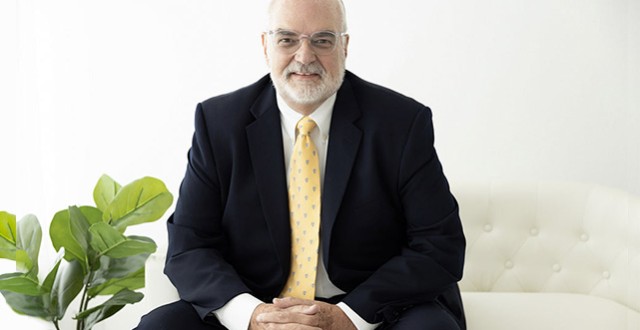
- Mediation
- Arbitration
- Court Neutrals
- Online Dispute Resolution
- Technology
- Court Decisions
- More
- Legislation
- Healthcare
- Guest Posts
- John DeGroote
- John C. Fleming
- Rick Freeman
- Professor Peter Friedman
- Honorable W. Royal Furgeson, Jr.
- James M. Gaitis
- Laura A. Kaster
- Professor John Lande
- Philip J. Loree, Jr.
- Michael McIlwrath
- F. Peter Phillips
- Professor Alan Scott Rau
- Professor Thomas J. Stipanowich
- Professor S.I. Strong
- Richard Webb
- Glen M. Wilkerson
- International arbitration
- Regulation
- Sports and Entertainment
- We’re Back!!!!Well, it’s been a while since we published and that is about to change. Since I spent much of last year becoming
 JAMS Welcomes Karl Bayer to its Panel of NeutralsJAMS, the world’s largest private alternative dispute resolution (ADR) provider, is pleased to announce that Karl Bayer
JAMS Welcomes Karl Bayer to its Panel of NeutralsJAMS, the world’s largest private alternative dispute resolution (ADR) provider, is pleased to announce that Karl Bayer Class Action Waivers in Arbitration Agreements: The Twenty-First Century Arbitration Battleground and Implications for the EU CountriesLinda S. Mullenix, Morris & Rita Atlas Chair in Advocacy at the University of Texas School of Law, has written “Class Ac
Class Action Waivers in Arbitration Agreements: The Twenty-First Century Arbitration Battleground and Implications for the EU CountriesLinda S. Mullenix, Morris & Rita Atlas Chair in Advocacy at the University of Texas School of Law, has written “Class Ac Picking the Proper Technological Tool for Problem-Solving in ArbitrationProfessor Amy J. Schmitz, John Deaver Drinko-Baker & Hostetler Chair in Law and Co-Director of the Translational Data An
Picking the Proper Technological Tool for Problem-Solving in ArbitrationProfessor Amy J. Schmitz, John Deaver Drinko-Baker & Hostetler Chair in Law and Co-Director of the Translational Data An
Recent Posts
Supreme Court Issues Orders on Special Master Interim Report
On October 12, 2010, the United States Supreme Court issued orders in Montana v. Wyoming (No. 137, Original). The original jurisdiction water rights case was filed before the Court in early 2007 and subsequently transferred to a Special Master prior to the Court’s review. The October 12th orders resulted from Montana’s objections to an interim report issued by the Special Master in February. First, the Court ordered oral argument regarding whether the Special Master was correct in concluding Wyoming did not violate the 1950 Yellowstone River Compact (65 Stat. 663) by drawing the same amount of water out of river tributaries but using it more efficiently and thus depriving downstream users (in this case, Montana) of more water as a result. Second, the Court recommitted to the Special Master a question regarding whether Montana’s state water laws require it to attempt to make up water shortages by prioritizing water usage so long as doing so does not violate anyone’s rights. Finally, the Court denied Wyoming’s motion to dismiss the lawsuit and awarded fees to the Special Master, to be paid in equal parts by both parties. It is interesting to note that the U.S. Solicitor General agreed with the Special Master in an amicus brief that Wyoming’s new efficiencies in irrigation do not violate Montana’s Compact rights and urged the Court to recommit the entire case back to the Special Master. Disputing will be watching this case for further developments. Tags: special masters
Continue reading...Defensive Medicine and the Role of Tort Reform
by Holly Hayes Modern Physician recently reported about a study by Harvard researchers that says the nation’s “medical liability system” accounted for approximately “$55.6 billion—or 2.4% of total healthcare spending in 2008—with almost $45.6 billion of that figure being spent on the practice of “defensive of medicine,” which includes ordering tests and procedures or avoiding high-risk patients in an effort to avoid being sued.” Purchase the full article here. The study indicates that states including Texas, California and more than a dozen others who have placed limits on noneconomic damages may “not be best for patients” and may not provide the solution to curbing defensive medicine. “Caps don’t seem to change behavior,” says Emily Carrier one of the lead authors of the study. She notes Texas limits noneconomic damages against physicians to $250,000. In an online survey of more than 3,000 physicians conducted last December by Jackson Healthcare, an Alpharetta, Ga.-based staffing and hospital management company, 92% of respondents said they practiced some form of defensive medicine. Pulling out the responses from Texas, Jackson reported that 80% of Lone Star State doctors said they still practice defensive medicine with 64% reporting no change in their behavior since caps went in effect in 2003, 31% reporting a decrease in defensive medicine practices and 5% reporting an increase. In Carrier’s study, physicians were not identified by individual states, but put in three groups consisting of the states with the highest and lowest risk of malpractice and those in the middle. When asked if they practice defensive medicine and are concerned or feel pressure by the threat of a malpractice suit, the study found that there was little difference in the level of concern among physicians practicing in the high-risk states and those in the lower-risk states. What frightens most physicians, Carrier says, is the arbitrary nature of malpractice lawsuits and how evidence suggests that the quality of care is not a good predictor of lawsuits. In fact, she says, “Many people actually injured by negligence don’t go on to sue.” “Physicians tend to view lawsuits as random events, unpredictable and uncontrollable, because they are not viewed as related to the quality of care provided,” the report concluded. “It is likely that physicians’ assessment of their risk is driven less by the true risk of malpractice claims or the cost of malpractice insurance, and more by the perceived arbitrary, unfair and adversarial aspects of the malpractice tort process—which most traditional state reforms do not address.” On Aug. 3, the American Medical Association released results of a survey of 5,825 physicians conducted in 2007 and 2008. Findings showed that 42.2% of the respondents said they’ve been sued at least once and more than 20% had been sued at least twice. Of respondents age 55 and older, 60.5% said they’ve been sued once and 39.2% had been sued at least twice. The federal government is backing pilot projects to test approaches that would ease the problem. HHS, through its Agency for Healthcare Research and Quality, awarded $25 million in grants for several patient safety and medical liability demonstration projects, with $2 million awarded to JBA/Rand to evaluate the findings from these projects and develop evidence to guide long-term solutions to current liability problems. “There will be a very strong focus on transparency, and disclosure to patients and families about harms,” AHRQ Director Carolyn Clancy says. “There will be a very strong focus on increasing the speed in which injured patients are compensated.” The interconnection between the twin problems of medical errors and medical liability can be hard to assess and lead to some misconceptions. “One myth might be that it’s an easy problem to fix,” she says. “This is a huge opportunity to make care safer, and that’s going to be a home run for everyone.” Similar demonstrations are authorized in the Patient Protection and Affordable Care Act, but AHRQ spokeswoman Karen Migdail says funds have yet to be appropriated to pay for them. The AMA, which has been bashed for supporting the healthcare reform law without getting any tort reform relief in return, is hoping to see tangible results. “The latest Harvard estimate of unnecessary costs generated by the nation’s flawed medical liability system affirms that real money can be saved with reforms,” states an e-mail from the AMA attributed to its president, Cecil Wilson of Florida. “The American Medical Association is committed to proven medical liability reforms that are already working in states such as California and Texas. As a result of AMA advocacy on the health reform law, for the first time the government has directed $25 million to further test promising proposals like health courts and safe harbors.” One of the AHRQ grant award winners is Eric Thomas, a professor of medicine at the University of Texas at Houston Medical School and director of the University of Texas at Houston-Memorial Hermann Center for Healthcare Quality and Safety. With his almost $1.8 million grant, Thomas will investigate UT’s disclosure and compensation program and identify and disseminate best practices for using disclosure to improve patient safety. A focus will be on involving patients or their families in the process. Thomas acknowledges that he and a colleague were sued during their residency by the family of a young woman who died from appendicitis complications several weeks after she came into the emergency room with abdominal pain and they diagnosed her with a urinary tract infection. He says that a jury found their original diagnosis to be correct and that her appendicitis condition developed independently from the problems that prompted the original emergency visit. The Harvard study published in Health Affairs concluded that the convergence of healthcare reform and tort reform “may have unexpected synergies in bending our cost curve down,” and Thomas notes how this may be happening in Texas. Thomas says “outstanding reimbursement reform from Washington or state Medicaid offices” may not solve malpractice problems and damage caps won’t stop doctors from practicing defensive medicine, but caps have saved money and the money […]
Continue reading...Alternative Dispute Resolution and the Rule of Law Symposium Held Today
The University of Missouri School of Law Center for the Study of Dispute Resolution is holding an Alternative Dispute Resolution and the Rule of Law symposium today in cooperation with the ABA Section of Dispute Resolution and the Missouri Center for the Study of Conflict, Law & the Media. The symposium is the first of its kind to examine the relationship between the Alternative Dispute Resolution and the Rule of Law: On the face of it, the Rule of Law and Alternative Dispute Resolution seem fundamentally at odds. The Rule of Law, after all, compels the use of formal rules to decide disputes. ADR, on the other hand, calls for the resolution of disputes through processes that do not depend upon the application of formal rules, such as negotiation and mediation. The two could not seem to be farther apart. But a closer look suggests that ADR and the Rule of Law are not mutually exclusive. Judicial and administrative dispute resolution programs are common throughout the state and federal courts and governments. Increasingly, too, ADR processes such as town halls, study circles, and citizen juries, are being used to facilitate community dialogue on a wide range of public issues, from neighborhood blight to national health care. Moreover, many of our most established ADR processes – arbitration, mediation, even negotiation – are dependent upon the law to secure such crucial functions as enforcement, confidentiality, and legitimacy. To date, little consideration has been given to such questions. It is time, now, to have that discussion. Domestically, judicial and administrative ADR programs have become institutionalized, but serious questions about their legitimacy remain. Internationally, promotion of the Rule of Law remains a hallmark of U.S. foreign policy, but implementation remains a challenge in the face of traditions of graft, corruption and violence. Can ADR help? Papers and presentations from the symposium include: Internalizing the Rule of Law through Transitional Justice and ADR by Michal Alberstein, Law Faculty, Bar-Ilan University (Israel) Designing Governance to Produce the Rule of Law: Collaborating with the Public and Stakeholders by Lisa Blomgren Bingham, Keller-Runden Professor of Public Service, University of Indiana at Bloomington Access to Justice: Lessons from the Field by William Davis, Co-Founder, DPK Consulting (San Francisco) From Noise to Music: Using the Multi-Door Courthouse in an Integrative Conflict Management System to Promote Inclusion and Rule of Law in Latin America by Mariana Hernandez-Crespo, Associate Professor of Law, St. Thomas School of Law Alternative Dispute Resolution and the Rule of Law in Development Cooperation by Ambassador James Michel, former Counsel, U.S. Aid for International Development A Deliberative Look at ADR and the Rule of Law by Dr. Peter Muhlberger, Research Professor, Texas Tech University College of Mass Communications How ADR Can Foster the Rule of Law: Beyond the Fundamental Tension by Richard C. Reuben, James Lewis Parks Professor of Law, University of Missouri School of Law A brochure for the symposium may be viewed here and the agenda is available here. UPDATE: A webcast of the symposium may be viewed here. We welcome your thoughts on the relationship between ADR and the rule of law. Technorati Tags: law, ADR, mediation, arbitration
Continue reading...Second Circuit Eyes On Supreme Court, AT&T Mobility
A recent news story published in The AM Law Daily highlights an interesting arbitration case from the Second Circuit. The case involves a young attorney named Joshua Fensterstock who, after graduating with over $100,000 in student loans in 2003, consolidated his student loans in 2006 with Education Finance Partners (EFP), a student loan company serviced by Affiliated Computer Services (ACS). By August 2007, Fensterstock noticed that his loan balance was increasing rather than decreasing despite making regular payments. He contacted ACS and was told that unless he made his payments exactly on the 14th of each month, his payment was not applied to the principal amount, but solely to the interest. Fensterstock filed suit seeking class status, alleging fraudulent and deceptive practices and challenging a class-wide arbitration waiver contained in the agreement. Although EFP’s counsel argued that Fensterstock had the capacity and responsibility to read and understand the terms of the loan contract he was signing since he was an attorney, the Second Circuit was not persuaded. In Fensterstock v. Education Finance Partners, 611 F.3d 124 (2d Cir. 2010), the Second Circuit held that the class action waiver and class-wide arbitration waiver clauses were unconscionable and unenforceable under California law, the relevant law under the agreement’s choice of law provisions. The Court based the holding on its reading of California unconscionability law which allows a court to find that a contract clause offered on a take-it-or-leave-it basis to a much weaker party is oppressive and, as such, supports a minimal showing of procedural unconscionability. Further, despite his status as a practicing attorney who advises clients in financial matters, the court saw nothing in his education, expertise, or experience prior to the contract to provide Fensterstock with a meaningful opportunity to negotiate the class waiver and class-wide arbitration waiver clauses out of the loan agreement. EFP’s counsel filed a petition for a rehearing on the grounds that the Federal Arbitration Act (FAA) preempts California law in this matter, but EFP believes the Second Circuit may wait until the U.S. Supreme Court renders an opinion in AT&T Mobility, LLC v. Concepcion, 09-893. In AT&T Mobility, set for argument on November 9, 2010, the Supreme Court will decide if the FAA preempts the states from conditioning the enforcement of an arbitration agreement on the availability of certain procedures even if those procedures are not necessary to vindicate a party’s claims in a specific dispute. Although certiorari was granted out of the Ninth Circuit, AT&T Mobility is particularly relevant to the Fensterstock case because it also involves underlying issues of California contract law and a class-wide arbitration waiver. You can read the full news story here. Disputing has recently blogged about the AT&T Mobility, LLC v. Concepcion case here and here. Technorati Tags: law, ADR, arbitration
Continue reading...Arbitration
Mediation
Healthcare Disputes
Legal Research
About Disputing
Disputing is published by Karl Bayer, a dispute resolution expert based in Austin, Texas. Articles published on Disputing aim to provide original insight and commentary around issues related to arbitration, mediation and the alternative dispute resolution industry.
To learn more about Karl and his team, or to schedule a mediation or arbitration with Karl’s live scheduling calendar, visit www.karlbayer.com.






